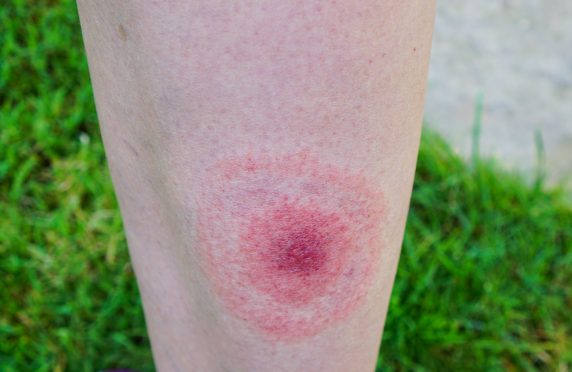The National Institute for Health and Clinical Excellence (NICE) has urged doctors to diagnose and treat lyme disease on the basis of the characteristic ‘bull’s eye’ rash alone without waiting for test results.
NICE has issued a quality standard for all doctors to prescribe antibiotics quickly to anyone with a suspected case of lyme disease who has the tell-tale red erythema migrans rash.
It is hoped the introduction of the standard will speed up treatment to those with obvious signs of the disease in order to reduce the risk of infection spreading and causing lasting damage.
It follows previous advice that waiting for testing may not be necessary.
Veronica Hughes, CEO, Caudwell LymeCo Charity, said they regularly hear from people whose doctors have decided to wait for a blood test not realising that the rash is the more reliable guide.
‘Waiting for blood test results always delays treatment; when a patient has the rash, this delay is unnecessary and reduces the likelihood of total cure,’ she said.
The recommendations state that an ELISA laboratory test may not pick up early signs of the disease because antibodies may not appear until six to eight weeks after someone has had a tick bite.
For those with symptoms but no rash, an ELISA test should be done but will need repeating after four to six weeks if it comes back negative but Lyme disease is still suspected.
Ticks that may cause Lyme disease can be found all over the UK, but high-risk areas include grassy and wooded areas in southern England and the Scottish Highlands.
Professor Gillian Leng, deputy chief executive and director of health and social care at NICE, said: ’For most people with Lyme disease, a course of antibiotics will be effective, so it is important we diagnose and treat people as soon as possible.
’A person with Lyme disease may present with a wide range of symptoms, so we have clear advice for professionals about the use of lab tests for diagnosis and the most appropriate antibiotic treatments.
’If a characteristic bull’s eye rash is present, healthcare professionals should feel confident in diagnosing and treating Lyme disease.’
Saul Faust, Professor of paediatric immunology and infectious diseases at the University of Southampton and chair of the guideline committee, said: ‘Lab tests are necessary when a person’s symptoms are unclear, but they are not needed if a person presents the characteristic red rash, erythema migrans.
‘Doctors should feel confident to prescribe antibiotics immediately for those with erythema migrans.’
It follows the news that the Government will invest an extra £2m in the latest phase of the Public Health England antibiotics campaign which launched in 2017 to try and drive down the use of antibiotics.

















